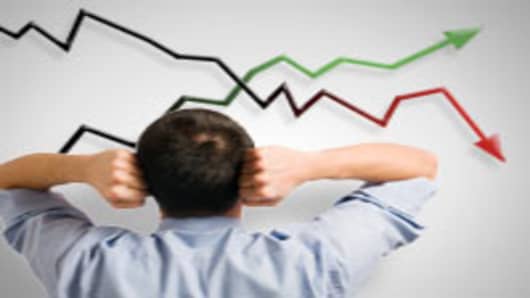Despite statements from officials and analysts that a double-dip recession will not hit the US, there are some little-watched indicators that are pointing to a downturn in the economy, David Rosenberg, chief economist and strategist at Gluskin Sheff, said in a market commentary note.
Analysts are almost in unison when they predict a jobless recovery, but not many think the economy will slide into recession again.
Many are forecasting a revival of the Federal Reserve's quantitative easing efforts when it meets on Aug. 10 to breathe life into the anemic recovery.
"The level of complacency over the economic outlook is palpable and so reminiscent of the fall of 2007 when everyone believed the Fed could navigate us into a soft landing in the face of a credit collapse," Rosenberg wrote.
"Now the pundits have all but abandoned the ECRI index as a leading indicator (even the architects have) of economic activity," he said.
The Economic Cycle Research Institute (ECRI) indexclaims it is able to predict when a turn in the economic cycle follows.
ECRI – an independent forecasting group - uses 19 leading indexes covering various aspects of the economy such as exports, imports, house prices, services and employment to gauge the health of the US economy.
While Rosenberg says a double dip "may well be averted" the recovery "is proving to be extremely fragile."
"Many market commentators and prognosticators still see this cycle as a classic post-war correction in GDP than what it really is — the aftershocks of a post-bubble credit collapse," he wrote.
Some analysts point to the fact that the ISM index is well above 50 to show the recovery is on track.
But "out of the 18 industries polled in the ISM, only 10 reported growth, which was down from 13 in June and the lowest tally since December 2009, while 4 actually contracted," Rosenberg wrote.
What's more, the new orders component in the ISM was down 12.2 percentage points in the last two months, he added.
"The last time this happened was October 2008 and in fact is a 1-in-25 event," according to Rosenberg.


